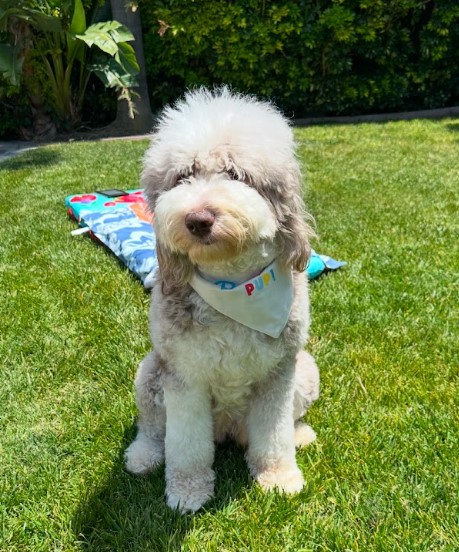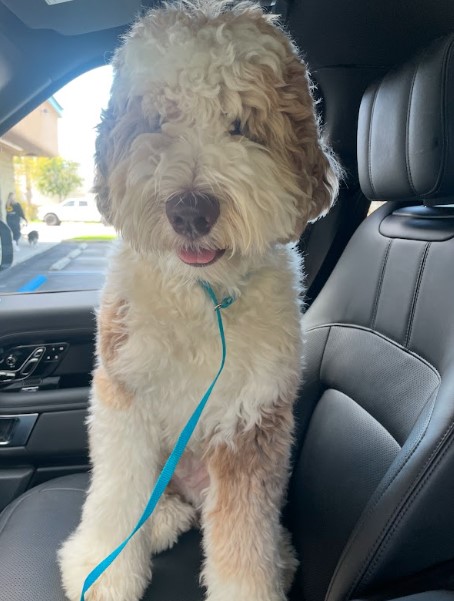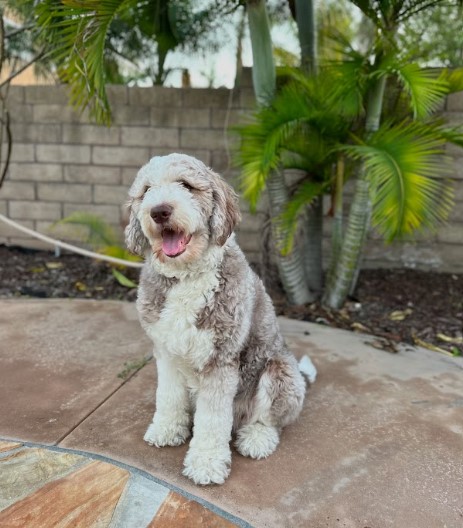Check out our available litter!
I find that sheepadoodle puppies can start training as early as 8 weeks. At that age, training them to sleep in their crate and go there to relax is of priority. It gives us a foundation to start on other types of training. Sheepadoodles are generally stubborn and to keep a healthy and happy sheepadoodle, here are some training tips to shape a well-behaved sheepadoodle.
Set Up Your Environment with Crate Training
We should think of the crate as an extension of the home, not a prison cell. A dog will feel more at ease in their new surroundings when they have someplace to call their own. It is not meant to be used for an extended amount of time.



List of reasons why it’s important to crate train your sheepadoodle
Crate training is a simple and easy way to housebreak your dog. It is also the most effective way to train. There are many benefits of crate training for dogs such as:
🦴It helps with potty training
🦴It makes traveling easier
🦴It makes staying at home easier
🦴It keeps your pet safe
Follow these steps to crate train:
🐾Introduce the crate gradually with a soft blanket or cushion.
🐾Leave the crate door open for exploration at their own pace.
🐾Encourage entry by placing treats or toys inside.
🐾Once comfortable, close the door for short periods while staying in the room.
🐾Gradually increase crate time while ensuring regular bathroom breaks.
It’s important to remember that sheepadoodle puppies have small bladders and will need to go outside frequently to go to the bathroom. A month is equal to one hour. Two months = 2 hours, 3 months = 3 hours and so on. The maximum amount of time they should be in a crate should be no longer than a few hours. When you first start crate training your puppy, you may need to take them out every hour or two. As they get older and more trained, you can gradually increase the amount of time they spend in the crate.
Socialization
- Expose your puppy to different people, sounds, environments, and other pets.
- Keep experiences positive with treats and praise.
Name Recognition
- Teach your puppy its name by saying it before giving treats or praise.
- Repeat until your puppy responds reliably.
Basic Commands
- Sit: Hold a treat above their head, moving it slightly backward until they sit.
- Stay: After your puppy sits, show your palm, say “stay,” and reward after a few seconds.
- Come: Use a happy voice and treats when calling your puppy’s name followed by “come.”
Leash Training
- Introduce the leash gradually to avoid fear.
- Start with short, positive walks around the house or yard.
- Reward good behavior and avoid pulling.
Bite Inhibition
- Yell “ouch” and stop playtime if the puppy bites too hard.
- Offer chew toys as a replacement.
Prevent Jumping
- Ignore jumping and reward your puppy when all four paws are on the ground.
- Teach “off” or “down” commands.
Positive Reinforcement
- Reward good behavior with treats, praise, and playtime.
- Avoid punishment to prevent fear and confusion.
Enroll in Puppy Training Classes (Optional)
- Consider professional classes for socialization and guided training. I’ve taken my dogs to Petco for their puppy training and found it useful. It was very affordable. I’ve known of people who have enrolled in Bootcamp Training where they’re sent away for 3 weeks to learn. Those programs seem to be very effective but costly.
Consistency, Gradual Independence, Consistency and Love all play a factor in training the perfect sheepadoodle.
